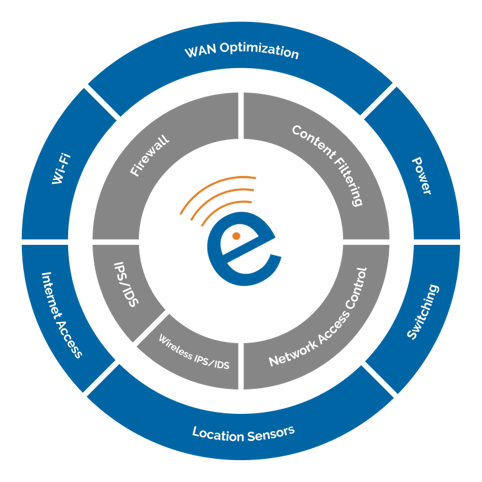Today, our primary way of getting online is using our mobile devices. Whether it's at work, at school, on vacation, shopping, at church or even at the doctor's office, mobile devices have grown in importance as well as in numbers.
This is a drastic shift from 5-10 years ago when we still plugged in to get online or access network resources.
Technology, specifically mobile devices change very quickly, every 12-18 months. After two refresh cycles the technology completely changes, making it incredibly difficult for IT managers and CIOs to keep up with demand.
Ultimately this leads to frustrated, upset, unproductive end-users and for businesses, decreasing revenues and rising costs.
When planning to refresh, or to start from the ground up with your wireless network, there are three components to hone in on, to deliver a fast, reliable and secure user experience.
1.) It’s about more than just one product
A lot of times business owners and IT decision makers can get caught up around one product, typically access points, but no matter what it is, this causes them to make mistakes and fail to see the bigger picture.
It's many components coming together under the right WLAN design to produce the necessary or required results. Below is that system. Blue are networking components and gray are security.

2.) Wireless networks are more complicated than ever
Prior to mobile devices, design was much simpler, based on very controlled and predictable environments. Now, with the explosion of mobile devices things have become a lot more complicated and inherently more difficult to secure.
Hello BYOD.
Your wireless network design must match the devices that are connecting to it. If your network is older than 3 to 4 years old, chances are newer devices won’t be able to communicate with your out dated wireless network infrastructure, causing poor wifi performance and again, unhappy end users.
We must design for capacity or user/device and application density. Today you need both coverage and capacity; capacity adds context (how, where and when devices are being used).
To gain a better understanding of coverage and capacity check out this video
Our wireless systems are required to support both personal and business devices on the same network, while guaranteeing the highest levels of security, however, this is easier said then done. Choosing the right partner to work with is a critical factor to achieve the necessary results, take a look at this recent blog to learn what questions you should ask when deciding who to partner with.
3.) WiFi planning never stops
From the RF environment, to how the devices or technology is being used to how much it's being used, security threats, and everything in between, wifi planning never stops.
Wireless is alive; it's dynamic. This has led to it being absolutely essential that we measure performance to maintain a fast, reliable and secure user experience.
Your users have higher expectations than ever before, demanding anywhere, anytime, any device connectivity.
They also have even more ability to impact your business when they're unhappy i.e. social media (twitter, Facebook) and review sites such as tripadvisor and yelp.
You can't just deploy your network and walk away, even if it's running as needed at first, it requires on-going monitoring and proper network management to guarantee optimal wifi performance.
A network management system provides real time visibility into your wireless and wired infrastructure, as well as your end-users.
It provides the inside scoop as to what is happening on your business’s network at any given moment.
In turn, this decreases the time-spent troubleshooting, allowing IT more time to focus on other priorities to maintain productivity.
Next Steps
You can’t run a business without utilities like water or electricity, and now the same is true about having proper wireless.
Many organizations don’t have the skillset or time necessary in order to support the varying needs of their wireless systems. Keeping up with the demand is a financial and technical challenge.
Traditional capital purchasing models don’t help either. You end up paying large amounts of money for a network that in 3-4 years’ time will become obsolete.
Wi-Fi as a Service, guarantees your business always has the necessary infrastructure to properly support the devices and applications connecting to their network. through a subscription-based model.
This enables you to focus on what your business needs to provide guests and employees with an enjoyable, productive and secure user experience.
At SecurEdge, we provide the platform that simplifies networking. If you have any questions or would like to discuss an upcoming project, please contact us here.




